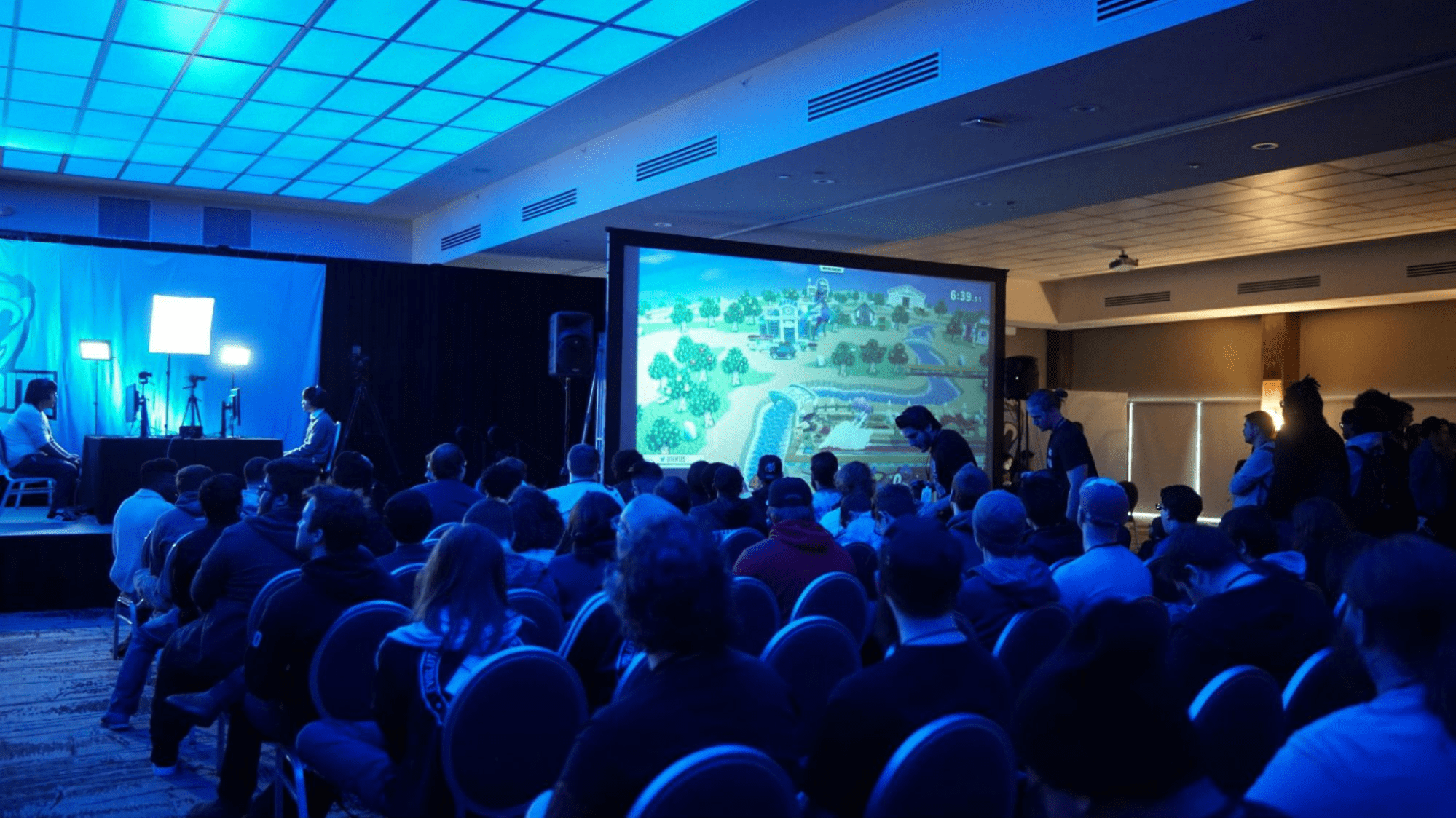Pitching an event can be exhilarating and nerve-wracking. Sure, you’re proud of your ideas, but you only have one chance to make a good impression.
At Eventbrite, we’ve helped event organizers create standout events for 16 years. So trust us when we say that putting your ideas on the line may be scary, but the payoff makes it worthwhile.
This article will guide you through crafting a compelling pitch letter and provide valuable tips to make a lasting impression.
Table of contents
What’s the purpose of a pitch letter?
Step-by-step guide: How to pitch an event
Top tips that’ll help your pitch letter stand out from the crowd

What’s the purpose of a pitch letter?
A pitch letter is a persuasive tool to communicate a proposal or event idea to potential collaborators, promoters, venue owners, investors, or sponsors. Like an ‘elevator pitch,’ it should be short and snappy. Its purpose is to help secure opportunities and partnerships with no more than one page of text.
For example, an event curator like By Royal may have used a well-written letter or email pitch to convince Revel that their weekly ‘Greatest Show on Earth’ event was worthy of a recurring Saturday time slot at their venue.
Step-by-step guide: How to pitch an event
The secret to pitching an event is simple: write an event proposal that’s actually worth reading.
Investors receive hundreds of pitches, and those without a strong hook will be disregarded. In 2021, 40% of event organizers created 16+ ‘big events’. So keep in mind that event organizers are busy people.
Every word, from your pitch subject to your table of contents, needs to convince an investor that they’ve found the perfect person. The harsh reality is that no one in the event industry will risk their reputation on someone who delivers bad pitches.
So, whether it’s an in-person business pitch or a cold email pitch, use pitch templates with proven effectiveness to increase your response rate. Otherwise, you risk writing a pitch letter that doesn’t contain valuable content.
1. Come up with a killer subject line
In Ben Parr’s book, Captivology: The Science of Capturing People’s Attention, the author discusses the importance of ‘disruption’ and making a headline compelling by leveraging exclusivity.
In your pitch subject, make sure to:
- Be concise
- Tailor the subject line to the recipient
- Avoid spam triggers, like using all-caps
- Not use too many emojis
💡Pro tip: To maintain intrigue and avoid giving too much away, don’t use generic statements, and refrain from including clickbait tactics.
✅ ‘Exclusive Opportunity For [Recipient’s Name]: Let’s Unlock Your Venue’s Potential ✨’
❌ ‘The BEST EVENT IDEA Proposal You NEED To Hear!!!! 😉🤯’
2. Start strong with a personalized greeting
Go the extra mile with your greeting and create a polite and personalized message. Use inclusive language, such as ‘you,’ ‘me,’ and ‘my,’ to establish a sense of connection and rapport.
Remember that you want your greeting to convey excitement about the potential collaboration without appearing overly assertive or presumptuous.
Tips for creating a solid greeting:
- Reference previous interactions and ask a specific question
- Address the recipient by name
- Express interest in the recipient’s recent achievements or projects
💡Pro tip: 94% of marketers agree that personalization helps boost sales. People engage with someone they trust and have an emotional connection with.
To create a personalized pitch letter, use a relaxed writing style in your opening and draw on your event connections to establish familiarity.
✅ ‘Dear [Recipient’s Name]. It was a pleasure meeting you at [Event Name]. [Insert Name] informed me that you’re launching a new event in December; I hope preparation is going smoothly!’
❌ ‘To whom it may concern. I am sending this letter to pitch my idea about…’
3. Include a compelling description of the event idea
Think of your event description like a blog post or product launch. While a catchy title might grab attention, you have nothing without a compelling main idea that appeals to a larger audience.
What to include in your event description:
- Unique features
- Exclusive offerings and special guests
- Details about the target audience

💡Pro tip: Don’t forget that your event description is a sales pitch, so be engaging and utilize descriptive language. For example, The Strand Book Store’s event description for their upcoming event is fun, lively, and playful — just like their brand.
✅ ‘For one night only, attendees will be able to re-live their teenage years by jumpin’ and pumpin’ to non-stop RnD hits as performed by hit DJ special guest [Insert Name].’
❌ ‘The event will be a throwback music event with guest performers.’
4. Explain the benefits of the event
Just like a compelling media pitch or a sponsorship pitch deck, a pitch letter needs to explicitly highlight the benefits of the event from a business perspective.
Make sure to emphasize benefits relating to:
- Brand exposure and visibility
- Ticket sales and registrations
- Recurring attendees
💡Pro tip: To make your case more convincing, discuss how your event strategy could benefit a collaborator. For instance, Reggae and Soca Events already use engaging Instagram videos to promote their events, which can help a collaborator get more eyes on their event brand.
✅ ‘Our upcoming [Insert Event] offers a valuable opportunity to enhance your brand exposure, visibility, and reputation.’
❌ ‘We believe a collaboration would be a worthwhile investment for your company.’
5. Attach a cost proposal
The person you’re pitching to will want to know the costs associated with your event proposal. They have budgets and need to know how the event will affect their bottom line. While discussing budgets can be awkward, it’s necessary for event planning.
Don’t forget to include the benefits the potential collaborator will receive by supporting your event.
During your event pitch, be transparent and include specific details to avoid unexpected costs at a later date. Remember to mention a discount for early bird bookings.
💡Pro tip: Download our free example to see what a well-executed cost proposal should look like.

6. Draw on a case study
Using a previous event as a case study, especially if it involved a collaborator who benefited significantly, demonstrates credibility and shows that you can put your expertise into action.
Make sure to choose a case study that:
- Targeted the same audience as your proposed event
- Generated a considerable return on investment (ROI)
- Has comprehensive data reports
💡Pro tip: Be specific and provide concrete evidence, such as social media engagement metrics, event ticket sales, and attendee numbers.
✅ ‘The reason we’re so confident this event idea will be a success is because of the [Insert Number] event registrations and [Insert Percentage] ROI we received from our last [Insert Event] in 2023’.
❌ ‘We also hosted an event that was similar to this one and was well received by our regular attendees.’
7. Include visual support materials
Visual aids such as Google Slides and PowerPoint presentations are a great way to pitch an event idea. But avoid using too much text in the slides; it makes it difficult for a sponsor or collaborator to follow your presentation. To keep your presentations fun and engaging, use graphics, charts, and graphs to convey complex ideas.
You don’t need to pay a graphic designer to create a presentation-perfect deck; you can use tools like Powerpoint, Infogram, or Canva.
💡Pro tip: To provide tangible social proof and demonstrate your understanding of social media marketing, you can embed live posts into your pitch letter as well.
✅ Engagement levels are high; photo shows attendees’ enjoyment level and are stylistic:
❌ Negative comments are visible; the image only focuses on the venue, doesn’t feature any attendees, and is poor quality.
8. Outline the next steps moving forward
Once your initial pitch is drafted, add the steps both parties should take to progress the partnership. Take the time to outline the next phase of your relationship so there’s no ambiguity.
For instance, you might specify that a sponsor should reply to your email if they want further discussions.
Tips for making it impactful:
- Set realistic expectations
- Clarify a collaborator’s expected level of involvement
- Explain what work has already been completed
💡Pro tip: To instill confidence in investors, be specific about the work completed, as this will demonstrate that you’re proactive and committed to your event’s success.
✅ ‘We have already reached out to [Insert Number] performers and are currently working on locking down a venue in [Insert Location]. With your help, we would be looking at hosting the event on the [Insert Date and Time].’
❌ ‘The event preparation has already started, so we expect the timeline will be quite short for this event.’
9. End with a call to action and your contact details
You need to end with a strong call to action (CTA) to increase your response rate. Then, offer multiple contact details to make the process as convenient as possible, such as your email address, phone number, and social media handles.
Tips for making your CTA impactful:
- Create a sense of urgency
- Be direct and specific
- Use authoritative language
💡Pro tip: Setting a response deadline can serve as a strong CTA, as it helps maintain momentum and clarity in the collaboration process.
✅ ‘If you’re interested in collaborating on this event, please reply to this email by the [Insert Date], and we can schedule a meeting to discuss further details.
❌ ‘We hope to hear back from you soon’.

Top tips that’ll help your pitch letter stand out from the crowd
A pitch letter shouldn’t just highlight your event idea. It should also demonstrate how well you know your potential collaborators’ brand — and their audience. Your pitch letter is a chance to showcase what ‘makes you you’ and highlight the unique value you bring.
Focus on your partner’s objectives
Your sponsor or potential partner is the center of your pitch letter. After all, you need their buy-in.
Before making your first move, research your partner and their event. Incorporate them into your pitch after you understand their challenges and target audience.
Some examples of what to look for when researching your potential collaborator’s objectives include:
- Who are the target audience?
- What is their message or event goal?
- What is their budget?
- Do they have experience with events?
Keep it short
When crafting your event proposal, you must distinguish yourself from the bad pitches or unrealistic event elevator pitches they’ve received in the past and establish yourself as an authority — the more concise, the better. Think of it like a short news story or an effective media pitch: short, attention-grabbing, and engaging.
In addition to helping you stay on message, your brevity demonstrates respect for your collaborator’s valuable time.
A few tips to keep your event pitch on point include:
- Stick to the key points
- Eliminate any information that’s not about the event proposal
Tell a story
Don’t rely on your potential partner’s imagination to translate your vision accurately. Instead, paint a vivid picture of the live experience with storytelling.
A well-crafted story can help you build a narrative throughout your pitch and hook listeners. It doesn’t have to be complex. But like every good story, it should have a beginning, a middle, and an end.
Your pitch should try to:
- Tell the story from the attendees’ point of view
- Include details about the day of the event and what attendees may experience

Use data reports from an event management tool
You, being the innovative, business-minded event creator you are, would never invest in a business without checking its numbers first. So, you can’t expect a legitimate investor to walk into a partnership with your brand without solid proof of concept.
In your pitch letter, use data to back up any promise, statement, or claim about how many attendees you expect to see at a proposed event and how many ticket sales you predict to make.
Vague statements like ‘we expect to see a large number of attendees’ should be replaced with specific numbers from your event past that tell a complete (and truthful) story.
The best way to gather specific and accurate data from your previous events as evidence is to use an event management tool like Eventbrite.
With Eventbrite, you receive up-to-date data reports and analytics on every aspect of your event, from target audience interactions with your brand to conversion rates, attendance tracking, and event registration numbers.
You can even filter data to show trends in your events, from your latest event all the way back to a year ago. There’s also the option to screenshot or download this information and incorporate it into your pitch letter.
Gather event data for your pitch letters

Be receptive to feedback
Getting buy-in from your collaborator is great. But getting critical notes on your pitch will do more for you and your career.
After your pitch, don’t shy away from feedback. Enquire about what worked and didn’t work — then listen. Let them know if you can identify extra opportunities to create more value. Maybe it’s a unique relationship with a relevant sponsor or a vendor you know who can cut you a great deal.
Once you get this feedback, incorporate it. This will show your potential partner that you take their opinions seriously and set the foundation for a successful long-term partnership.
Follow up with a thank you email
The most overlooked part of a great pitch? Saying thank you.
The end of your pitch leaves a strong impression, so it’s important to finish strong. Follow up with a thank you email to everyone involved in the decision-making process.
Write a pitch letter that makes your event stand out
Writing a pitch letter that packs a punch is a daunting task — after all, you only get one chance to make a great first impression on a potential collaborator.
Luckily, you don’t have to go through this alone. Impactful event management software like Eventbrite is an essential part of the event planning process, but we’re also your go-to partner for event registration and promotion.
Yes, that’s right, we really are the ‘full package.’
Let us help you create a data-driven pitch letter that conveys just how awesome you are because once you’ve won your pitch (which you will), it’s time to get your event live and drive the sales you promised — and trust us, that’s where the fun really happens.






